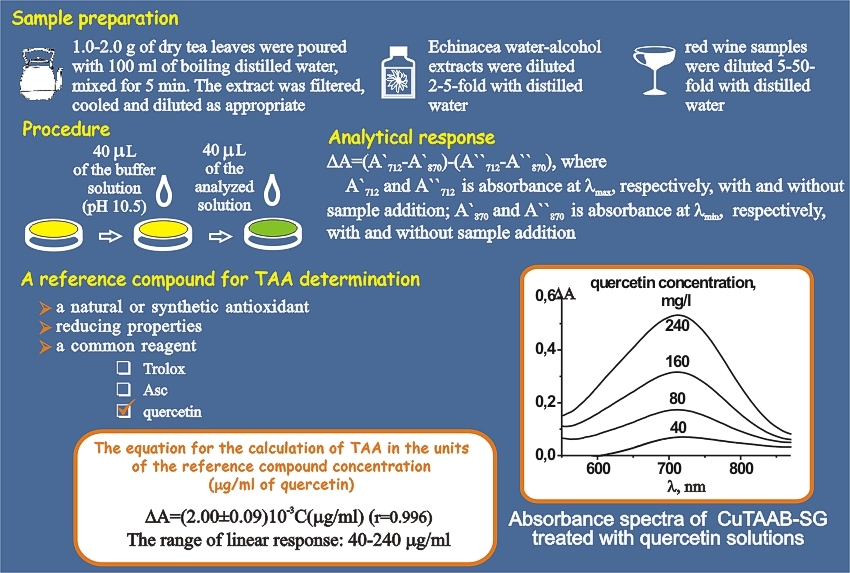
 ECHINACEA PHYTOCEUTICALS:
ECHINACEA PHYTOCEUTICALS:
antioxidant power and its correlation with
total caffeic acid derivatives content

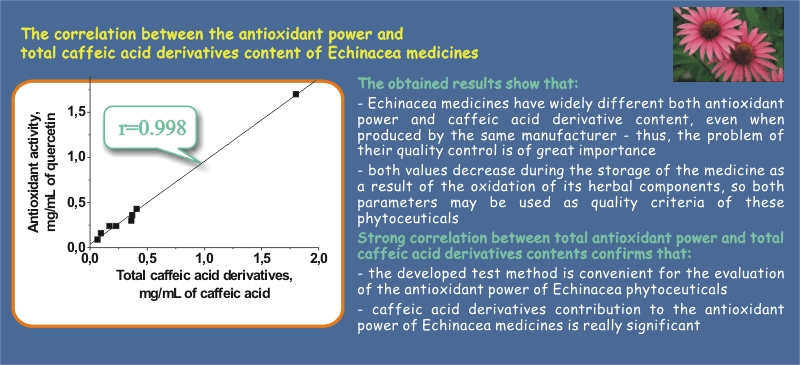
BLACK AND GREEN TEAS:
antioxidant power and its correlation with
total flavonoids, total tannins and total polyphenols
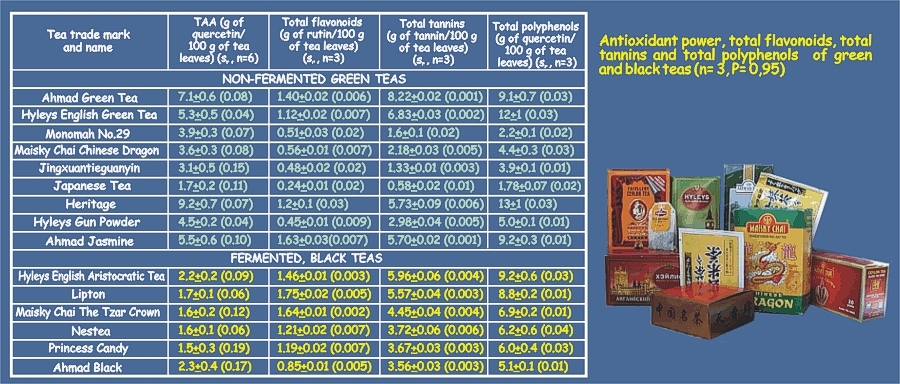
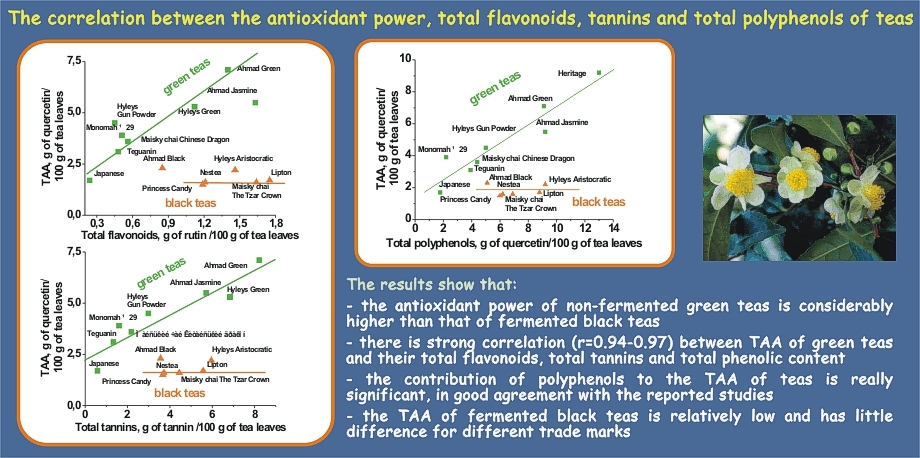
RED WINES:
antioxidant power and its correlation with total polyphenols
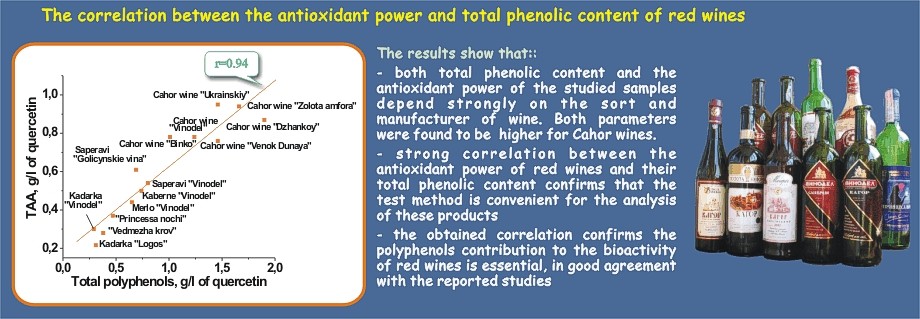
The obtained results show that CuTAAB-SG may be succesfully employed in quality screening
of herbal products. Moreover, we expect that this modified sorbent could be applied to
the analysis of biological samples, in particular, for the evaluation of blood serum
antioxidant status.
